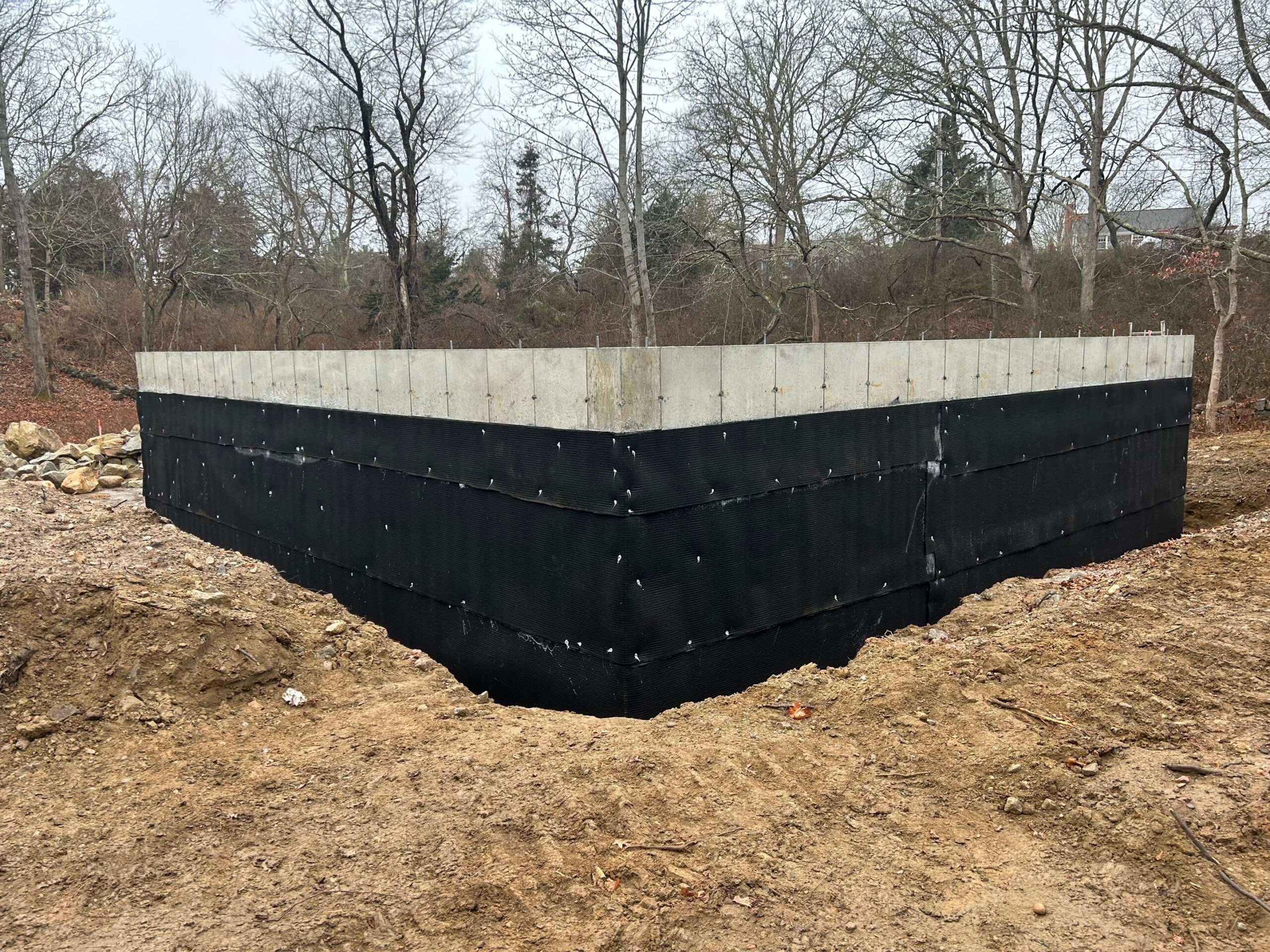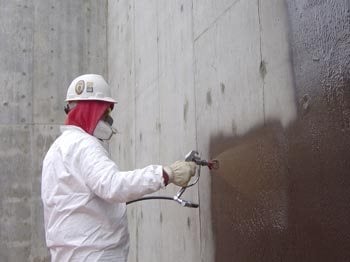How come damp removal newcastle is your first defense against household mold
How come damp removal newcastle is your first defense against household mold
Blog Article
Exploring the Numerous Strategies and Solutions for Effective Damp Proofing
Moisture in structures positions significant challenges to both architectural honesty and indoor air high quality. Numerous strategies and remedies have arised to combat this prevalent concern. From conventional damp-proof membranes to cutting-edge chemical treatments, each method uses special benefits. Understanding these choices is crucial for reliable wetness control. Nonetheless, selecting the best option relies on certain building problems and demands, motivating more expedition into one of the most reliable wet proofing techniques offered.
Understanding the Reasons of Wetness
Although dampness can arise from various sources, recognizing these reasons is essential for reliable removal. Generally, wetness originates from 3 key resources: increasing moist, permeating wet, and condensation. Increasing wet takes place when groundwater travels upwards through permeable materials, such as block or rock, typically due to an absence of an efficient barrier (mould treatment newcastle). Penetrating wet is commonly triggered by outside aspects, including roof leakages, defective gutters, or damaged wall surfaces, enabling water to penetrate a building. Condensation, on the various other hand, arises from excess wetness airborne, usually intensified by bad air flow and temperature differences, causing water beads creating on surfaces. Recognizing these underlying concerns is essential, as each sort of moisture requires a customized approach for remediation. Appropriate assessment aids in figuring out the most reliable solutions, ultimately protecting the structural integrity of a structure and boosting indoor air top quality
Standard Damp-Proof Membrane Layers

Chemical Damp-Proofing Solutions
Chemical damp-proofing remedies offer a cutting-edge strategy to avoid wetness intrusion in buildings. These techniques generally involve the application of liquid chemicals that permeate masonry and form a barrier versus climbing moist. Frequently used chemicals include silanes, siloxanes, and other water-repellent representatives that respond with surface area products to create a hydrophobic layer.The application process usually needs drilling holes right into the walls, infusing the chemical remedy, and permitting it to heal. This technique is particularly advantageous for older structures where conventional damp-proof membrane layers may be unwise. In addition, chemical damp-proofing can be less turbulent and more cost-effective than extensive restoration projects.While efficient, these solutions rely on proper application and ecological conditions for peak performance. Routine upkeep and tracking are important to guarantee the long life of the damp-proofing treatment. In general, chemical damp-proofing represents a functional alternative for safeguarding structures against moisture-related damage
Dental Caries Wall Building And Construction Methods
Dental caries wall building strategies use various benefits, particularly in wetness control and power performance. By incorporating an air void between two layers of stonework, these wall surfaces effectively reduce water access while boosting insulation. This combination not just secures frameworks from dampness yet also adds to lowered energy usage.
Advantages of Cavity Wall Surfaces
When thinking about reliable wet proofing methods, the advantages of tooth cavity wall surfaces attract attention prominently. Cavity walls consist of 2 different layers, developing an air void that effectively decreases wetness infiltration. This layout decreases the danger of moisture, as the external wall acts as an obstacle versus rain and water access. In addition, cavity wall surfaces boost thermal insulation, which adds to power performance by lowering warmth loss. They also supply sound insulation, assisting to produce a quieter indoor environment. The air gap allows for air flow, which assists in wetness control and lowers the chance of mold development. These benefits not just boost the total comfort of a building however also add to its durability and structural stability.
Moisture Control Techniques
Reliable wetness control techniques are important in tooth cavity wall construction to ensure long-term defense against dampness. One main technique entails the incorporation of weep openings, which facilitate water drainage from the dental caries, avoiding accumulation. Furthermore, the use of breathable membrane layers can help take care of wetness levels while enabling entraped vapor to get away. Proper placement of insulation is also important, as it should not obstruct water drainage courses. Additionally, making certain that the outer fallen leaves of the dental caries wall are created with waterproof products enhances general resilience. Regular maintenance checks are necessary to identify any blockages or damage early, protecting the structure's stability. Eventually, a mix of these methods creates a durable defense against dampness invasion in dental caries wall surfaces.
Insulation and Energy Effectiveness
Insulation plays a crucial duty in boosting energy efficiency within cavity wall surface construction. By incorporating insulating products, these wall surfaces develop a thermal obstacle that minimizes heat loss and reduces energy intake. Effective insulation not only helps maintain a stable indoor temperature level however likewise reduces the risk of wetness, as it protects against condensation within the wall surface tooth cavity. Various strategies, such as the usage of stiff foam boards or mineral woollen, can be employed to accomplish optimal insulation performance. Additionally, appropriate setup is vital to guarantee that voids and voids are lessened, which can or else endanger power performance. Ultimately, a well-insulated dental caries wall surface contributes substantially to total sustainability and lowers heating & cooling costs for house owners.
Exterior Damp Proofing Methods
Outside wet proofing approaches are essential for safeguarding structures from dampness seepage. 2 effective techniques include the application of water-proof membrane layers and the installment of French drains. These solutions aid reduce water buildup and preserve the stability of buildings.
Waterproof Membrane Application
While numerous methods exist for protecting against wetness ingress, the application of water-proof membranes stays an extremely reliable external moist proofing strategy. These membranes are generally made from products such as polyethylene, rubber, or modified bitumen, giving a durable barrier against water penetration. The installment procedure involves applying the membrane layer to the exterior surfaces of walls or structures, ensuring complete protection to avoid leaks. Proper bond and sealing at joints are critical to making best use of performance. Water resistant membrane layers can be used in numerous kinds, consisting of liquid finishings and sheet membrane layers, permitting versatility based upon the certain demands of the framework. This technique not only safeguards buildings from moisture however likewise improves their durability and structural integrity.
French Drain Installation
One effective approach for taking care of groundwater and avoiding wetness build-up around a building's foundation is the installment of a French drainpipe. This drainage system contains a trench loaded with crushed rock and a perforated pipeline that reroutes surface water away from the foundation. Proper installation requires careful planning, ensuring that the drain inclines far from the framework to facilitate suitable water flow. Furthermore, the location of the drain is crucial; it ought to be positioned in areas prone to merging or excess dampness. Routine maintenance, consisting of clearing particles from the gravel and guaranteeing the pipe remains unblocked, is vital for lasting performance. Inevitably, a well-installed French drainpipe can considerably decrease the threat of water-related issues in basements and foundations.
Inside Waterproofing Methods
Inside more info waterproofing techniques are vital for shielding a structure's interior from dampness seepage and prospective water damage. These techniques typically involve the application of specialized materials and methods developed to develop a moisture barrier within the framework. One common technique is using waterproof coverings or sealants on wall surfaces and floors, which avoid moisture from passing through surfaces.Additionally, setting up interior drainage systems, such as sump pumps, can effectively manage water build-up in cellars and crawl areas. An additional method includes using vapor obstacles, which are installed to inhibit wetness motion from the ground right into living spaces.Moreover, addressing any fractures or spaces in wall surfaces or structures with ideal sealers assures a complete defense against water invasion. By implementing these interior waterproofing methods, homeowner can considerably lower the threat of mold and mildew growth, structural damage, and various other moisture-related issues. Appropriate execution of these strategies is essential for long-lasting security and structure honesty.
Normal Maintenance and Evaluation Practices
Normal maintenance and evaluation practices are vital for guaranteeing the long-term effectiveness of damp proofing solutions in any kind of structure. Regular checks allow homeowner to recognize very early indications of wetness invasion, such as peeling paint, mold development, and stuffy smells. These indicators can indicate underlying problems that need instant attention.Inspections ought to be conducted a minimum of yearly, focusing on vulnerable locations like basements, creep areas, and exterior wall surfaces. Throughout these evaluations, residential property owners should examine sealers, drain systems, and ventilation to verify they function correctly.Additionally, maintaining seamless gutters and downspouts is crucial, as clogged systems can result in water buildup near the structure. Carrying out a regular maintenance timetable, together with prompt repair services, can considerably prolong the lifespan of moist proofing actions and secure the structural stability of the structure. Proactive procedures inevitably contribute to the total health and wellness and safety of the living setting.
Often Asked Inquiries
Exactly How Lengthy Does Damp Proofing Commonly Last?
The period of moist proofing efficiency varies, typically lasting in between 20 to half a century. Elements such as application quality, ecological conditions, and upkeep techniques significantly affect the durability of the damp proofing therapy.

Can I Damp Proof My Home Myself?
The individual contemplated the usefulness of do it yourself damp proofing. With correct research study and the ideal materials, it is feasible. They additionally acknowledged the importance of expert guidance to ensure resilient effectiveness and stop future issues.
What Are the Indications of Inadequate Damp Proofing?
Indicators of ineffective moist proofing consist of consistent stuffy odors, noticeable mold and mildew development, peeling paint, moist spots on wall surfaces, and wood decay - damp removal newcastle. Property owners must address these problems quickly to avoid further damage and health and wellness problems
Does Damp Proofing Affect Indoor Air Quality?

Just How Much Does Expert Damp Proofing Price?
Professional moist proofing prices vary significantly, typically ranging from $1,000 to $5,000 relying on the home's size, the level of the moist issue, and picked methods. Each circumstance requires a customized evaluation for accurate rates. Typically, dampness stems from three key sources: rising moist, penetrating wet, and condensation. When taking into consideration effective damp proofing techniques, the benefits of dental caries wall surfaces stand out plainly. External damp proofing methods are vital for securing frameworks from dampness seepage. While numerous approaches exist for preventing moisture ingress, the application of water resistant membranes stays a very effective exterior damp proofing method. Indicators of inefficient wet proofing include consistent stuffy odors, visible mold and mildew growth, peeling paint, moist patches on walls, and timber decay.
Report this page